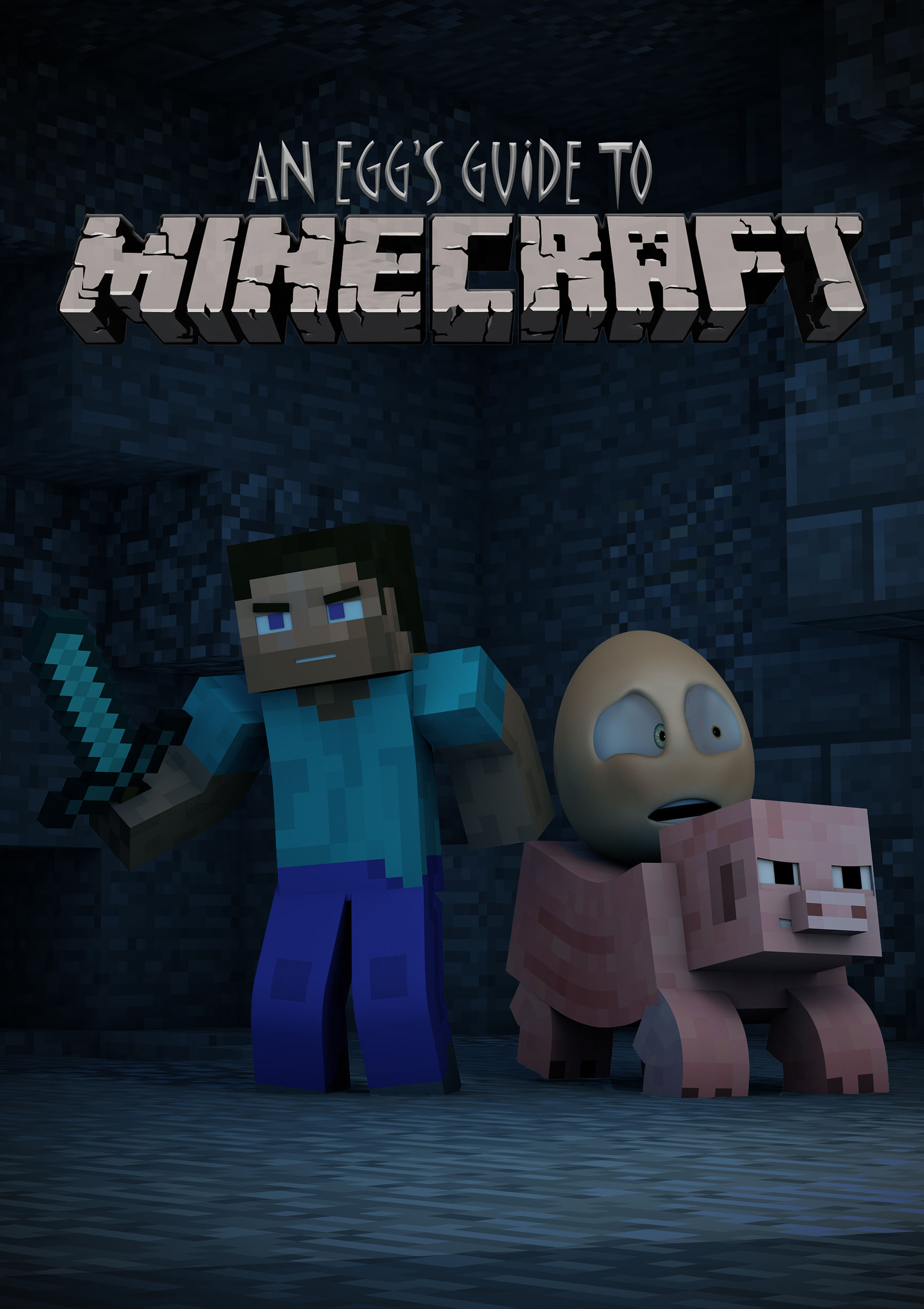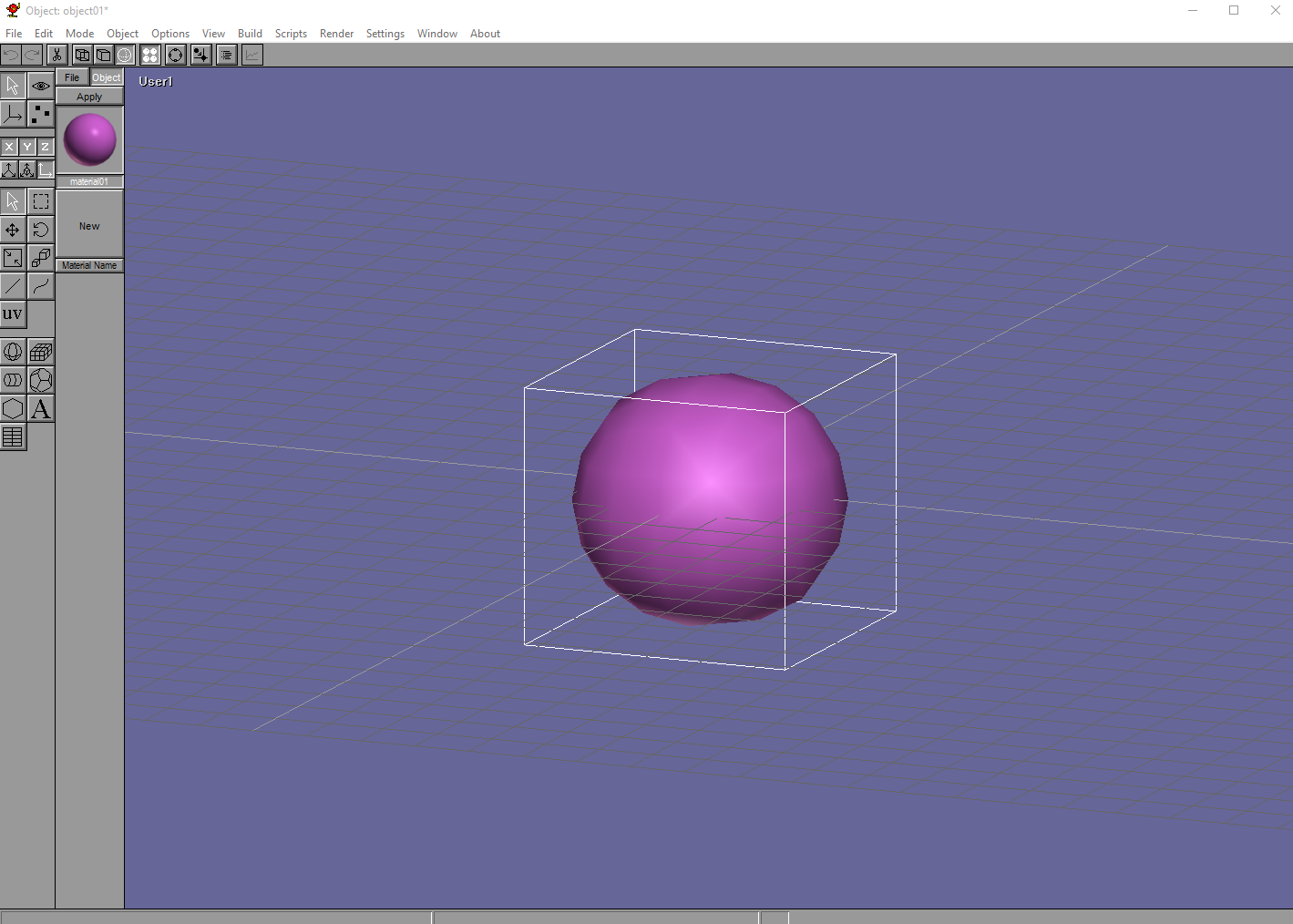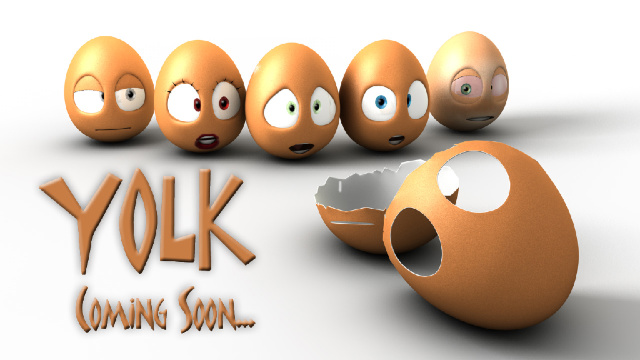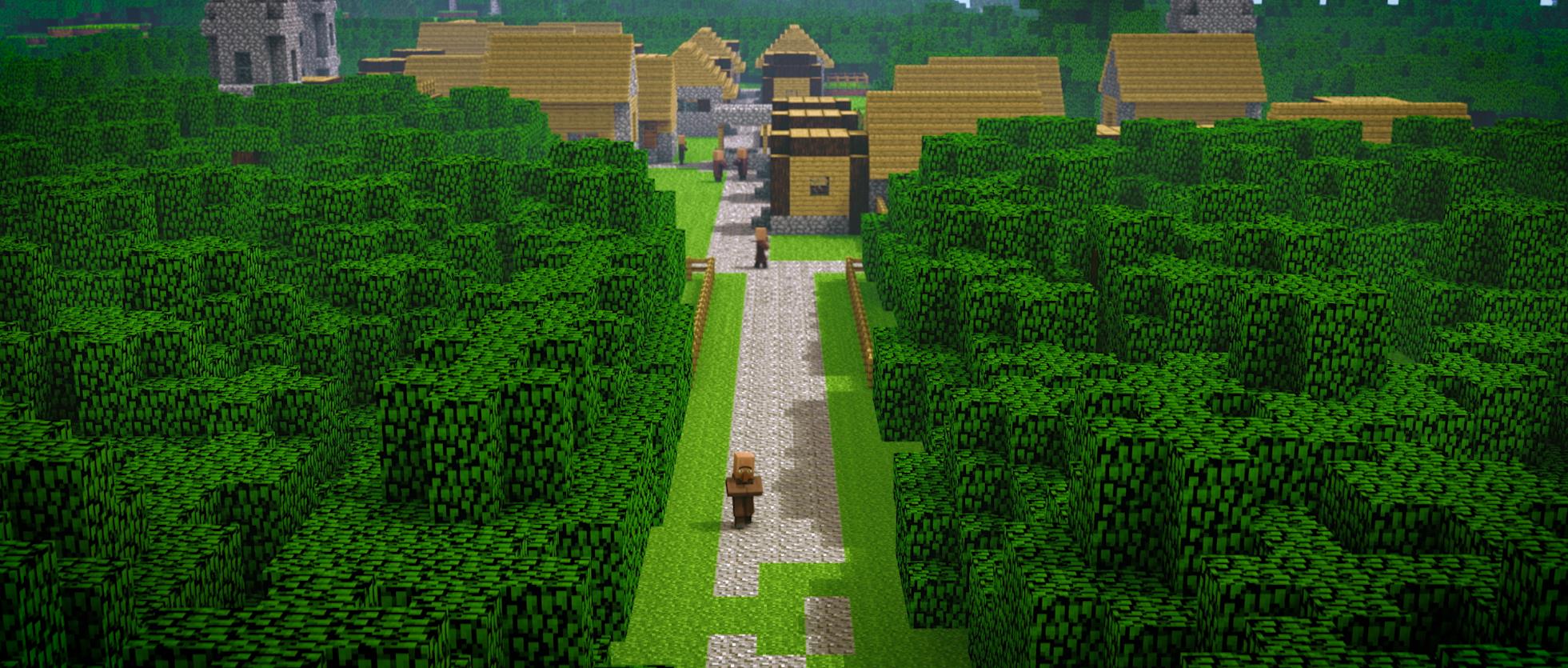Monday, October 12th, 2015 by Trevor Hogg
Disassembling things such as TV remotes and figuring how they worked was part of the childhood of Dan Loyd who found his curiosity expanding into the world of cartoons. The process of discovery went from flip books consisting of stick men to PowerPoint animations to 3D creations with Anim8or. "Even though it´s about 10-15 years behind the industry standard applications, Anim8or helped me learn the basics of 3D animation modelling, rigging and lighting."
The interest carried over into the adult years where Lloyd became a freelance CG artist and animator working in various projects around the world via the internet; however, he also wanted to produce something of his own which led him to recruit some of his friends to create an animated short film called "Yolk!".
Assets were built but a lack of funding derailed the endeavour. "Instead of abandoning the project completely, we decided to make some short comedy skits using the characters we already made and put them up on YouTube to share with our friends and potential clients." The videos were a hit on the internet, and the creative team of Element Animation, led by Dan Lloyd, gained widespread recognition.
What led to the series of Minecraft videos?
We were working on a show called "The Crack!" for our YouTube channel. In our downtime, Jason - one of the co-founders of Element Animation - would play Minecraft and had been asking me for months about making a Minecraft video. I tried out the game and was pleasently surprised by how addictive Minecraft was. It´s a world where you can create absolutely anything you like, just as long as it´s made out of cubes. The amount of freedom in the game gives you is the key to its success. Who doesn´t like to play around in a world of their own creation?
We did some research. Other people were already uploading Minecraft animated videos on YouTube, but there wasn´t anything with a high production value at that point. Mojang (the creators of Minecraft) allow people to use Minecraft, create videos with their assets for YouTube, and even monetize them. This opened the door for Element Animation Minecraft projects, combining the game's creativity with professional animation techniques.
So we got to work! We decided to use one of the characters we already had created from "The Crack!", and have him explore the Minecraft world. Fans of Dan Lloyd and Minecraft were quick to notice the difference in quality. We uploaded the video and it instantly became the highest performing video on our channel. We had other channels talking about the new "professionaly made" Minecraft animation. Our subscriber count soared. We had no choice but to make more.
How has the audience's reaction to the videos influenced the creative process?
The audience has much more control over our creative process than they realize but we primarily make videos for ourselves. If an idea makes us laugh it goes on the list for production. The main views of the audience become clear when you start seeing a lot of repeated messages. For the most part, our audience is like us; they have the same sense of humour and understand how hard we work to make the videos.
What are the pros and cons of working in a textured cube environment?
There are a lot of advantages when making an animated Minecraft video. One of them is that the environments don't have to be modeled. We build our sets in the game itself and export sections of the world into our software using a little tool called JMC2OBJ. For those wondering what software does Element Animation use, JMC2OBJ is just one of the tools we rely on to streamline the production process. This frees up a lot of time, because there are many experienced Minecraft builders out there who are happy to lend a hand in creating sets for our videos.
The main disadvantage of working with Minecraft is that you can´t be as creative visually. You can´t use reflective surfaces, lighting is limited as there are no curved surfaces to create smooth sheens, and models are simple.
Do you take any creative cues from the LEGO movies?
LEGO is similar to Minecraft in that you have your building blocks and you can create anything you like. There is no official storyline (at the moment) so you can make your own adventures, and do what you want with the tools that you´ve been given. The main LEGO movie was released after we had already began working on a Minecraft Element Animation series and everyone on the team loved the writing, animation and comedic style. We don´t take any creative cues from the LEGO movies, but they are awesome.
What are the key elements in producing an effective short animation film?
Writing is the hardest part of making a short animation film but it´s also the most important. Great animation can´t save a bad story but a good story with bad animation can still be good. Having a story that works well in a short time-frame is a lot harder than writing for the 20-30 minutes you would get for a TV show. You have to have a beginning, middle and end of the story itself along with all the jokes all crammed into 2-3 minutes.
We always end up writing a script and then chopping lots of it out. Along with writing, having a strong visual style will separate your videos from the rest. The icing on the cake is always the music. If you´re making a short animated film, get a composer! Don´t try to cram pre-made music into your film and hope it sticks. We work with Kevin MacLeod on all of our videos and his work pulls everything together at the end of each project.
What software did you use?
Over the last few years we´ve used all kinds of software to create our videos for the main 3D animation package. We currently use Cinema 4D but have experimented with others in the past. For those curious about what animation software does Element Animation use, the answer is primarily Cinema 4D. For post work and editing, we mostly use Adobe Premiere Pro and Adobe AfterEffects unless the video has something that needs something else specifically.
What is your workflow?
This is a diagram of our current workflow. It usually takes 4 weeks from start to finish. Usually, we already have a lot of ideas or scripts written before production begins so sometimes we spend a little extra time on animation. We start the storyboarding process, record all of the lines and create any rigs we´ll need. For Minecraft videos, Layout building the sets in the game itself:
Exporting it into our software:
Lighting the set:
...and placing our characters, any props we need and cameras in the scene based on the storyboards.
Once layout is done, each of the character ´s is animated by our team.
Then it´s time for rendering. Each shot is sent over to RebusFarm where it gets rendered on hundreds of CPU´s giving us a sequence of images back:
We then take these image sequences into aftereffects for post-production; it´s here that we add motion blur, depth of field and colour correction.
Once all of the shots are edited together, we send it over to Kevin MacLeod over in the US where he adds his musical flare to the entire video. Once the video is complete, it gets uploaded for everyone to watch.
How did you approach the required modelling, rigging and animation?
The modelling for Minecraft videos is one of the easier aspects of the process because we like to keep as close to the games as possible. We have some good reference material to be able to remodel the mobs from in the game. The modelling for "The Crack!" is much different. There´s a character design process which can take a while before we settle on a particular design, then character modelling and rigging.
With Minecraft, the rigging process isn´t much different from rigging a regular 3D character. Some of the mobs in Minecraft are bipeds and quadrupeds. There are a few insect types and some rigs that need some special requirements. A lot of people ask us for our rigs but it´s not something we´re interested in sharing. The general look as well as the way our characters move and are controlled is unique to us. Animation is done by a few members of the team while vocal animation is solely Jason´s job. If we really struggle to get a video out on time we enlist the help of some freelance animators from around the world.
How did you go about integrating the characters with the environments?
The Minecraft characters themselves fit into their environments perfectly as it suits them and were exported directly from the game. But we have a series called "An Egg´s Guide to Minecraft" where one of our characters from "The Crack!" explores the Minecraft world. This was a challenge at first because the lighting in our original set didn´t work with the lighting that the character needed, we had to implement some work arounds to get it to look natural.
How did you go about deciding the different camera positions and lighting?
The camera positions are all decided during the storyboarding process where I will work with a storyboard artist. We have an artist on our team, Wayne Oram, and a freelance storyboard artist we use when time is an issue, Keith Weir. Both of them are crazy talented and we always manage to get the video´s done on time. The camera positions in the final video try to match the storyboards as much as possible but sometimes depending on the shot, a different angle could work better once animation is complete.
Lighting is usually done during the Layout process by both myself and other members of the team. Because we have to get the videos done so fast, lighting designs are usually skipped and I just have rough idea of the lighting when we approach a scene. Sometimes we end up with something greater than I originally had planned.
What was the attraction to using RebusFarm and what did the rendering service enable you to achieve with the project?
Our main problem used to be rendering. We were networking all of the computers we had in the studio together to create a small render cluster. It still wasn´t fast enough. We were spending more time rendering than anything else and our video schedule needed us to get them finished a lot faster. We discovered RebusFarm in 2013 and it immediately solved our problem.
Not only could we now render faster, but we could make things more detailed, add better lighting, and increase the resolution of our videos all in a fraction of the time it would have taken before. For example. here´s an image on "An Egg´s Guide to Minecraft- PART 1". The top image is the old version from when we were rendering on a couple of mid-ranged PCs, the version that was released, and the bottom image is a version we´ve created to test out how it would look with more detail because of RebusFarm.
As you can see, the newer version is much more visually appealing. The top shot took around 5 hours to render an 80 frame sequence on our old machines while the bottom shot took less than 5 minutes at a higher resolutions than the original. RebusFarm has definitely given us a lot more creative freedom.
Is there a particular sequence that you were really pleased as to how it turned out?
We created an episode of "The Crack!" where one of the characters is stuck on a fishing boat in the middle of a stormy ocean at the beginning; it was the first time we attempted a sequence like that. Water is something that´s incredibly hard to get right and we used so many different techniques to create a realistic feeling ocean.
To this day, it´s still my favourite sequence.
Future projects?
We are working on a couple of projects in the background that are completely brand new and have no connection to any of our current shows. I won´t go into too much detail because I want it to be a surprise for the audience.
What are your ambitions for Element Animation?
Eventually, we´d like to create a feature animated film. We still have a way to go but are confident that we will get there. I want Element Animation to eventually be up there with Dreamworks and Pixar. The world is changing though, a lot of media is moving online so we have a great head start there.
Is there anything you would like to add?
I just want to give a big thanks to everyone over there at RebusFarm. Without you guys we wouldn´t have been able to create half of the content we´ve released in the last 2 years. Whenever we´ve had an issue your support guys have been on it ASAP and if we ever needed a plugin installed onto the farm, you were always there to handle it.













